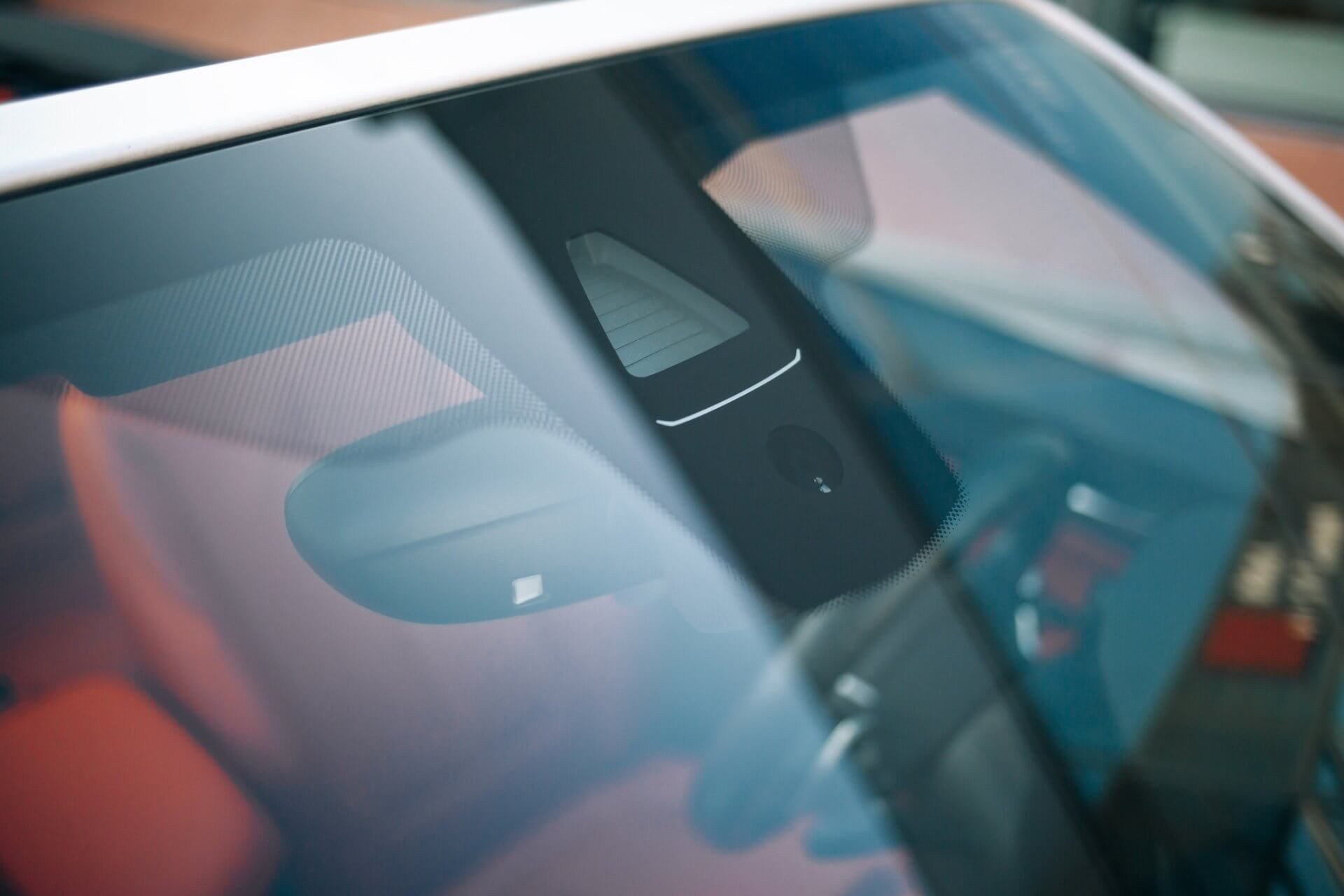Proudly Serving All of South Jersey, Delaware, and the surrounding area
COMMON AUTO GLASS FEATURES
Please keep in mind the below common windshield options and guidelines for recognizing what features are applicable to your vehicle. Common features referenced below include:
-rain sensors
-third visors
-electrochromic mirrors
-lane departure warning systems
-heated windshields
-shade bands
-heads up display (HUD)
-solar controlled glass.
- Rain Sensor
Typically, if your vehicle has a rain sensor there is a small gel pack stuck on the windshield near or by the rearview mirror or on the lower passenger side of the windshield. Additionally, if it begins to rain and your wipers turn on automatically this is a sign you have a rain sensor feature on your windshield.
- Heated Windshields
The best way to identify if your vehicle has a heated windshield is to look at the bottom of the windshield where you’re the wipers lay when not in use.
If it is a heated windshield, there will be small lines/wires within the glass, much like those seen on your rear window for your rear defroster. These wires are more discreet on the front windshield but if present than the windshield is heated.
The majority of heated windshields have a heated wiper park that resembles and works in conjunction with the back glass defrost.
- Windshield Third Visor
This is a black speckled shading on the windshield behind the rearview mirror. This is meant to keep the sun out of your eyes while looking in the area between the middle of the windshield and the pull-down visors. For this reason the feature is known as the third visor. The black dots also help distribute temperature evenly to lessen optical distortion or “lensing” from the windshield.
- Shade Band
The shade band on a windshield is also meant to keep the sun out of your eyes. Typically it is a strip of darker tinted glass at the top of the windshield where it meets the roof. Instead of only being behind the rearview mirror, the shade band runs along your entire windshield. It is often green and blue in color.
- Electrochromic Mirror
This is a rearview mirror that has an auto-dim feature that senses light and dims automatically. There are electrical components that allow for the mirror to automatically adjusts to night driving conditions.
To quickly determine if your vehicle has an electrochromic mirror would be if you have a digital compass in the mirror or if have buttons on the mirror.
- Heads up Display (HUD)
A heads up display (HUD) projects information on the windshield and does not require the driver to look away from the road, because the display is transparent. Common information displayed with this feature include speed, temperature, navigation instructions etc.
This technology was originally made for and used on military aircraft and has since been adopted for modern vehicles to feature the functionality.
- Lane Departure Warning System
The lane departure warning feature will alert the driver when the vehicle is drifting between lanes without using your blinker to alert other drivers of the change in lanes. This is down by using a low-cost camera mounted in the windshield near the rear view mirror that continuously monitors the striped and solid lines on the approaching roadway in front of the vehicle. The warning may be set up to come in the form of a beep, a vibration, an illustration on your navigation system, as well as a possible light up indicator.
- Blind Spot Monitoring
The blind spot monitoring system will light up whenever there is a vehicle in a potential blind spot on either side of your vehicle. This may be displayed on your side view mirrors, or it may also be on a by the edge of the windshield to the left of the driver. The feature enables radar to detect vehicles approaching from the side, with blinking LEDs in the rearview to indicate a car is in the blind spot.
- Solar Windshield Glass
Solar windshields are meant to block energy from the sun in order to protect eyes, prevent fading on the vehicle’s interior, and helps keep your vehicle cooler.
In a solar windshield the interlayer of the windshield is a heat absorbing interlayer that prevents the transfer of heat.
BROWSE OUR WEBSITE
CONTACT INFORMATION
Business Hours:
- Mon - Fri
- -
- Saturday
- -
- Sunday
- Closed






